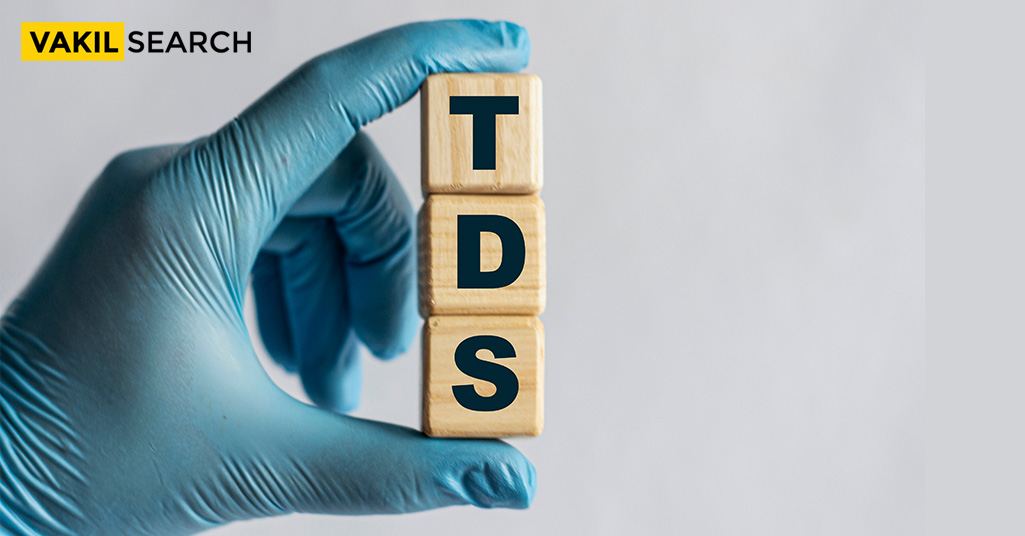Do you want to know what TDS is? Do you want to learn how to minimise TDS Amount on salary? Read the article to get yourself acknowledged with all the relevant information.
According to laws of income tax in India, employers should deduct TDS (Tax Deducted at Source) from the salary of their employees if the amount of salary is more than the threshold amount.
At the end of the financial year, employees are requested to show their ‘Income-tax declaration’ with pertinent details of their expenses and investments incurred during a previous financial year.
Based on these declarations, the employers deduct their tax at source regularly, either by deducting extra taxes or fewer taxes for the persisting time based on the substantial evidence of expenses, savings or investments displayed by an employee.
What is TDS on Salary?
TDS on salary can be described as the income tax that you pay on your salary. It is also known as withholding tax. The payment or salary paid by an employer towards their employees is divided into two categories – salary and perks or perquisites.
Here are a few more things you should know:
- Salary is the steady amount paid every week or month. Compared to that, perquisites are the benefits and facilities an employee receives while delivering their services and employment to the organisation
- For illustration, transportation, hotel accommodation, car allowance, canteen subsidy, travelling expenses, lodging and boarding, loans without any interest, gas and fuel subsidy, etc., all fall under the category of perquisites
- As per Income Tax Act, Section 10, a part of perks and allowances can be exempted from taxation
- The money or income deducted as TDS (Tax Deduction at Source) from an employee’s salary is indicated in Form 16. This amount can be credited into an employee’s account by the employer by the end of the financial term. Furthermore, the taxpayer or an employee can analyse the information of this deducted TDS deposited by their employer
- The taxpayer can simply assess the circumstances online after ascertaining their details via Form 26AS. However, if the income of a taxpayer or an employee is not up to the threshold limit spoken in the tax slab, then the employee is not accountable for paying any income tax. In such situations, TDS is not deducted from an employee’s income
- If the employee has more than one employer, that is when an employee has changed their job from one association to another or joined any new association. In such conditions, the employee should deliver a statement via Form 12B. Form 12B is a document of income tax that should be provided by employees who have shifted or changed their jobs. The main objective of such a form is to provide income details from your previous job to your new boss. Delivering Form 12B is not necessary. Based on the details you furnished to your new employer, your TDS return will be deducted accordingly
- The deducted amount as TDS on Salary is fixed to the central government account by the employer before the date prescribed by them. While depositing the TDS amount, the employer should cite their TAN number on the fixed challan 281. It is the responsibility of the employer to mention the payment paid to every employee and the deducted tax thereon while submitting TDS on salary to the government
- It is also essential to provide the Permanent Account Number (PAN ) while submitting TDS. However, suppose the employer does not deduct any TDS from an employee’s salary or does not deposit the TDS amount in the account of the government. In that case, the employer has to pay the penalty or interest
- Moreover, if the employer deducts less TDS on an employee’s salary during their beginning months than the amount that should be deducted, then the employer should deduct a higher TDS in the rest of the months or vice versa
- The TDS on a salary that is deducted yearly must be equal to the salary tax payable by an employee depending on their income bracket. However, if the TDS on Salary is higher than the amount of tax paid, the employee can claim a tax refund
- The deductor or employer must have a registration of TAN while deducting TDS. TAN is a 10-digit alphanumeric number that is utilised to track all the deductions of TDS on salary by the Income Tax department.
How can you minimise TDS on Salary?
- It is necessary to deduct TDS on Salary in the employee’s salary if the income of an employee is more than the exemption limit
- Under sections 80D and 80C, the government permits tax exemptions, where an employee can claim exemption depending on the employee’s various investments and expenditures in that specific financial year
- An employer’s responsibility is to get a document or any proof from an employee to authorise their case of tax exemption.
Conditions under which an employee can lessen their burden of TDS
- House Rent Allowance Exemption – An employee can ask for an exemption of tax on the amount they paid for rental accommodation. To claim such a deduction, the employee must deliver all the necessary proof documents of rent accommodation by providing the rent receipts to the employer
- Medical Allowance – An employee can claim a tax exemption if the employee is allowed medical allowances. The employee should give medical certificates and bulls to the employer as proof
- Conveyance or Travel Allowance – If the employee is furnished with a conveyance allowance, they can claim for tax exemption on the TDS amount. The employee can claim travel allowance only when the association does not provide any facility for transportation
- Interest on Loan taken for Residential Property – In this category, various details such as an address, name, lender’s PAN, bank certificate or approved institution having information such as loan availing date, chargeable interest, amount of instalment etc., should be submitted as proof to exempt from the tax
- Donations – If you have given some amount to any charitable institution such as a temple, mosque, authorised trusts, national defence budget, PM national relief account, etc., you have to provide a valid receipt as proof that contains all details such as name, address of institutes or trusts, PAN, donor name, validity, registration or reference number
- National Pension System (NPS) – For the national pension scheme, if you have deposited some money, you have to furnish a deposited receipt for that amount and a statement of appropriate extract from the bank to get this amount exempted from tax.
TDS on Salary Certificate
For TDS on salary deduction, the employer must furnish a Form 16 to the employee as evidence or proof of the TDS deducted, with their salary cleavage in Form 12BA.
Form 12BA
This form is utilised when employees get perquisites. This form is furnished to employees by their employers. Perquisites are the advantages an employee receives in addition to their salary based on the job and position there.
Under the Income Tax Act, Section 89(1), the employer should issue Form 10E and provide details if an employee is exempted from any tax. Notably, a person can save the TDS or appreciate the above advantages when a salary bracket is modified.
Conclusion
Every employer deducts a small amount from the salary of their employees as TDS on Salary. These rules are widely defined under the Income Tax Act. There are various means by which you can save your salary from TDS liability which have been mentioned in this article. Also, no TDS will be deducted from your salary if you have a salary that is not more than the threshold amount mentioned in the tax slab. If you want more information about the TDS and its deductions, Vakilsearch will help you with your every query. Get in touch with us to know more.
Also, Read:










